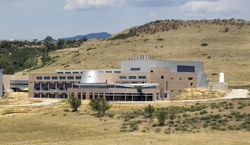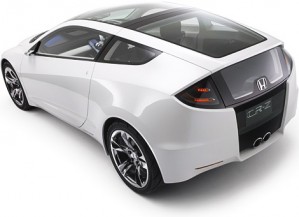 Leading by example, the US federal government, under orders from Barack Obama to slash greenhouse gas emissions by 28 percent over the next ten years, reported recently on good progress achieved so far.
Leading by example, the US federal government, under orders from Barack Obama to slash greenhouse gas emissions by 28 percent over the next ten years, reported recently on good progress achieved so far.
The federal government is the single largest consumer of energy in the U.S., a nation that uses more fossil fuels than any other in the world.
Changing work habits, procurement practices, building designs and vehicle choices create a huge impact due to the sheer numbers involved: 1.8 million civilian workers, half a million buildings and 600,000 vehicles.
Tom Carper, a U.S. senator from Delaware, said that he and other members of Congress will make sure the agencies deliver on their promises.
Hitting their targets would decrease cumulative carbon dioxide emissions by 101 million metric tons — equivalent to greenhouse gases from 235 million barrels of oil, the White House estimates. The United States consumes about 19 million barrels daily.
Sustainability campaigns are well under way
The U.S. Department of Transportation (DOT) headquarters in Washington has been powered entirely by renewable electricity since 2009. The DOT’s nearly 800 buildings nationwide use 15 percent less energy today than they did in 2003 thanks to building retrofits and a host of energy-savings programs that are now expanding.
Another large agency, the Department of Energy, said that nearly 5 percent of its total electricity use now consists of renewable energy and that it beat its annual renewable goal for 2009. On the agency’s to-do list is the opening of a large power- and heat-producing biomass plant that will replace an aging coal-fired plant at an industrial complex in South Carolina. When it opens for operations next year, the biomass plant will eliminate the need for 1.4 billion gallons of water annually and cut 100,000 metric tons of carbon dioxide emissions.
 The Energy Department is also replacing 753 of its government vehicles with hybrids this year to reduce its gasoline consumption. When announcing the new vehicle policy in March, Energy Secretary Steven Chu said his agency was expanding the use of hybrids “even as we reduce our fleet overall, saving gasoline and money for taxpayers.”
The Energy Department is also replacing 753 of its government vehicles with hybrids this year to reduce its gasoline consumption. When announcing the new vehicle policy in March, Energy Secretary Steven Chu said his agency was expanding the use of hybrids “even as we reduce our fleet overall, saving gasoline and money for taxpayers.”
The agency’s 15,000 employees are good at recycling too. In 2009, nearly half of all waste generated in the workplace was recycled and more than 10,000 metric tons of organic waste composted and kept out of landfills. The Energy Department has pledged to reduce greenhouse gas emissions by 28 percent by 2020.
The General Services Administration set its own ambitious emission reduction goal of 30 percent in a total makeover approach that addresses all aspects where they can make a real difference.
(Source: Bureau of International Information Programs, U.S. Department of State)



















